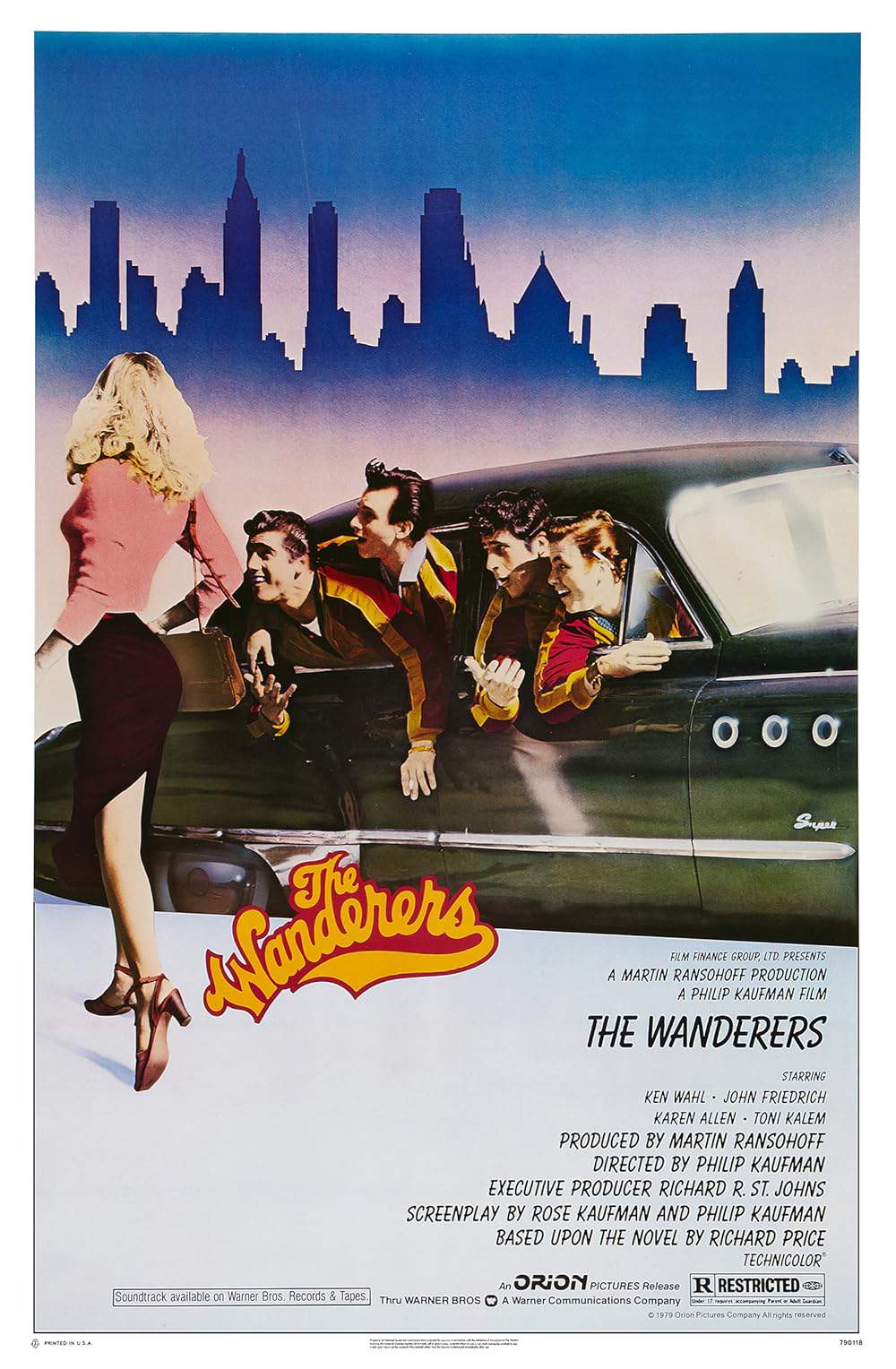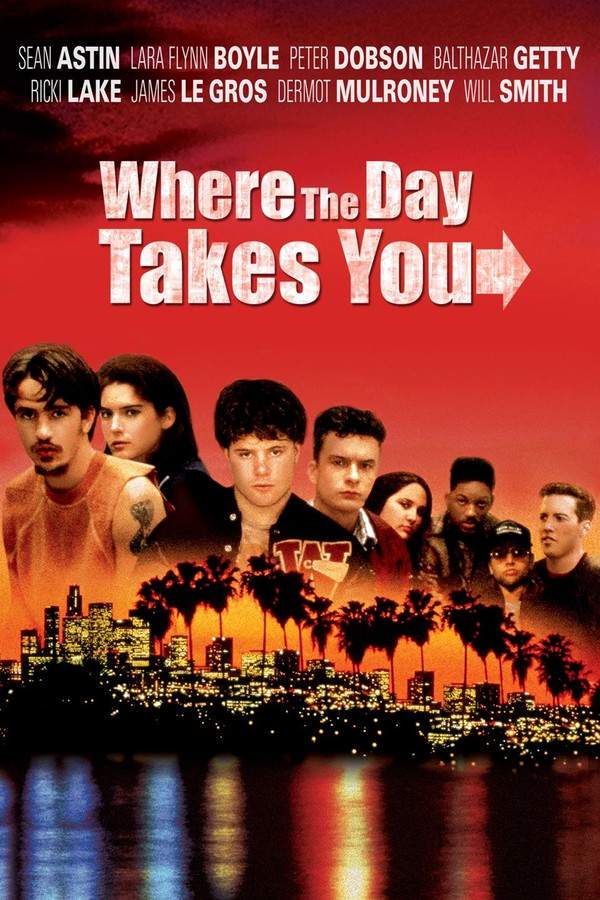
The Toilers and the Wayfarers
Year: 1997
Runtime: 75 mins
Language: English
Director: Keith Froelich
Phillip and Dieter struggle to conceal their sexual identities under the oppressive, puritanical attitudes of their small hometown, feeling they can barely breathe. When a mysterious German relative appears, the three outcasts band together and flee to the bustling city, hoping to find acceptance and a place where they truly belong.
Warning: spoilers below!
Haven’t seen The Toilers and the Wayfarers yet? This summary contains major spoilers. Bookmark the page, watch the movie, and come back for the full breakdown. If you're ready, scroll on and relive the story!
The Toilers and the Wayfarers (1997) – Full Plot Summary & Ending Explained
Read the complete plot breakdown of The Toilers and the Wayfarers (1997), including all key story events, major twists, and the ending explained in detail. Discover what really happened—and what it all means.
From the perspective of Dieter, a taco-loving German boy living in the United States, the story unfolds as a grounded, emotionally charged coming‑of‑age journey. Dieter navigates the confusion of adolescence against a backdrop of cultural contrast, friendship, and longing. When his childhood friend, Phillip, confesses his feelings for him, a brief, awkward kiss during a playful moment sends Dieter into a pool of mixed emotions. Disgust and surprise push Dieter to flee, and Phillip, left heartbroken, eventually leaves town, the ache of what might have been lingering in the air.
Meanwhile, a different kind of friendship grows as Udo arrives in Dieter’s orbit. Udo, who fills his days with tacos and lives with his aunt Anna, quickly becomes a close companion for Dieter, much to the dismay of Dieter’s conservative parents. Udo is portrayed as lazy and carefree, a contrast to the expectations placed on Dieter’s family and community. When Aunt Anna dies, Udo inherits money, quits his job, and purchases a stolen car with plans to take Dieter on a trip. Dieter’s father, alarmed by the closeness he perceives between the two boys, steps in and bans Dieter from seeing Udo, even administering a stern spanking. The family tension intensifies, and Dieter finds himself hiding at Udo’s house, a sign of his growing need to choose between a strict, conventional path and a life that feels more authentic to him.
The pair eventually set out on a trip toward the big city, chasing possibilities and independence. Their journey, however, is fraught with obstacles from the start: law enforcement quickly notices their car, forcing them to abandon it and continue on foot while they improvise a plan. To stay under the radar, they speak only English, a deliberate shift that underscores the cultural and personal improvisation at the heart of their odyssey. A second, cheaper car offers a temporary reprieve, but it breaks down, leaving them to rely on the kindness of strangers. A mechanic in the city—a generous man who speaks German and who has personal reasons for his sympathy—offers help and shelter, a beacon of humanity in a landscape that often feels hostile or indifferent. This mechanic’s backstory—speaking his native language despite past restrictions, having no children of his own—adds depth to his character and his decision to assist two stranded youths.
In the city, Dieter unexpectedly reunites with Phillip in a café, and the moment is charged with old warmth and the potential for reconciliation. Phillip, thriving in city life, shows Dieter the upside of urban freedom, inviting him to explore a world of possibilities. Yet the reunion soon reveals a harsher truth: Phillip engages in sex work to secure money, a reality he seems to accept, and even suggests that Dieter might consider the same path if he stays. The days that follow see their relationship rekindled, with Dieter confronting his own feelings for Phillip and accepting them more fully than before.
As the story progresses, the pressure mounts. Phillip falls ill, and Dieter finds himself navigating the precarious streets as he tries to earn money, now in a perilous line of work. A plainclothes officer offers money for services and ultimately arrests him, thrusting Dieter into legal jeopardy and drawing the attention of Dieter’s parents, who want him home. Faced with the threat of juvenile prison, Dieter exercises his right to a phone call and warns Udo to flee the city before the authorities pinpoint his address. The loyal mechanic again provides shelter for Udo, inviting him to stay with his wife until circumstances improve. Dieter, resourceful and determined, evades capture by outsmarting the officers and makes it back to Phillip, where they share a moment of intimacy and support amid the chaos surrounding them.
Yet the future remains uncertain. Dieter eventually leaves Phillip—who remains ill—behind and boards a train toward New York, chasing distance and perhaps a fresh start. On the platform, a chance encounter with a stranger hints at a longer arc: a recommendation to return to his homeland. The ending leaves Dieter with a difficult choice ahead, balancing the pull of family, identity, and the uncertain promise of belonging in a world that feels both inviting and unforgiving.
Note: Throughout the narrative, key relationships are anchored by authentic emotional stakes—the tension between duty and desire, the search for belonging, and the constant negotiation of language, culture, and power in a life moving between small-town constraint and big-city possibility. The film presents these dynamics with a careful, restrained tone, avoiding sensationalism while delving into the complexities of adolescence, friendship, and self-discovery.
Last Updated: October 09, 2025 at 09:34
Unlock the Full Story of The Toilers and the Wayfarers
Don't stop at just watching — explore The Toilers and the Wayfarers in full detail. From the complete plot summary and scene-by-scene timeline to character breakdowns, thematic analysis, and a deep dive into the ending — every page helps you truly understand what The Toilers and the Wayfarers is all about. Plus, discover what's next after the movie.
The Toilers and the Wayfarers Timeline
Track the full timeline of The Toilers and the Wayfarers with every major event arranged chronologically. Perfect for decoding non-linear storytelling, flashbacks, or parallel narratives with a clear scene-by-scene breakdown.

Characters, Settings & Themes in The Toilers and the Wayfarers
Discover the characters, locations, and core themes that shape The Toilers and the Wayfarers. Get insights into symbolic elements, setting significance, and deeper narrative meaning — ideal for thematic analysis and movie breakdowns.

Similar Movies to The Toilers and the Wayfarers
Discover movies like The Toilers and the Wayfarers that share similar genres, themes, and storytelling elements. Whether you’re drawn to the atmosphere, character arcs, or plot structure, these curated recommendations will help you explore more films you’ll love.
Explore More About Movie The Toilers and the Wayfarers
The Toilers and the Wayfarers (1997) Scene-by-Scene Movie Timeline
The Toilers and the Wayfarers (1997) Movie Characters, Themes & Settings
The Toilers and the Wayfarers (1997) Spoiler-Free Summary & Key Flow
Movies Like The Toilers and the Wayfarers – Similar Titles You’ll Enjoy
The Wanderers (1979) Complete Plot Breakdown
Where the Day Takes You (1992) Full Summary & Key Details
House of Boys (2011) Detailed Story Recap
The German Lesson (2019) Detailed Story Recap
Tan Lines (2005) Plot Summary & Ending Explained
Men in the Nude (2006) Ending Explained & Film Insights
Coming Out (1989) Movie Recap & Themes
Men… (1985) Full Movie Breakdown
Drifter (2023) Detailed Story Recap
Barefoot to the Neck (2009) Ending Explained & Film Insights
The Best Way to Walk (1976) Full Summary & Key Details
The Leather Boys (1964) Plot Summary & Ending Explained
Friends & Lovers (1999) Full Movie Breakdown
Naked Men in the Woods (2022) Detailed Story Recap
Behind the Trees (2023) Plot Summary & Ending Explained

















